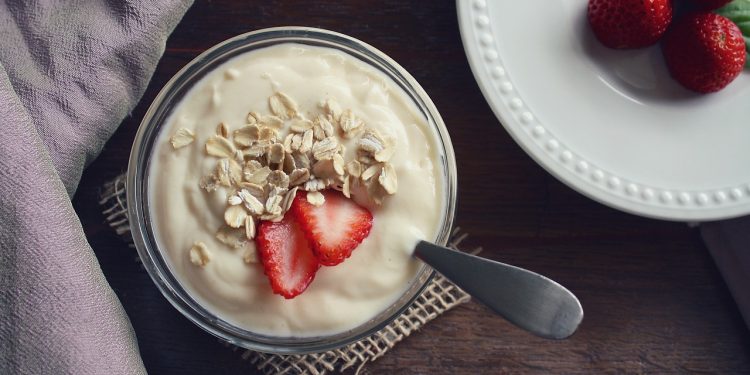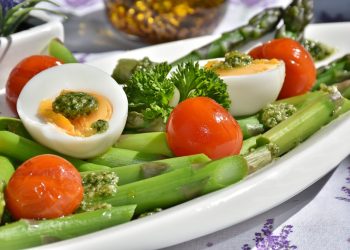Post-workout nutrition plays a crucial role in achieving weight loss goals while maintaining energy levels and muscle health. After exercise, your body needs the right nutrients to repair tissues, replenish glycogen stores, and promote fat loss. Choosing the right post-workout foods can help optimize recovery and boost your metabolism, ensuring you get the most out of your efforts. Here’s a detailed guide on what to eat after a workout to maximize weight loss.
The Importance of Post-Workout Nutrition
- Replenishing Glycogen: Exercise depletes glycogen stores in your muscles. Eating the right carbohydrates helps replenish these stores, ensuring your muscles recover and are ready for your next workout.
- Repairing Muscle Tissue: Protein intake after a workout supports muscle repair and growth, which is essential for maintaining a healthy metabolism and promoting fat loss.
- Reducing Muscle Soreness: Proper nutrition can reduce muscle soreness and improve recovery time, helping you stay consistent with your fitness routine.
- Boosting Fat Burn: The metabolic boost from a workout continues post-exercise, and eating the right foods ensures your body efficiently burns fat rather than muscle.
Macronutrient Breakdown for Post-Workout Meals
- Protein: Essential for repairing and building muscle, protein should be a priority after exercise. Aim for 20-30 grams of high-quality protein. Examples:
- Grilled chicken
- Greek yogurt
- Plant-based protein sources like tofu or lentils
- Carbohydrates: Carbs replenish glycogen stores and provide energy for recovery. Choose complex carbs for sustained energy and better nutrient absorption. Examples:
- Quinoa
- Sweet potatoes
- Brown rice
- Healthy Fats: While fats aren’t the primary focus post-workout, small amounts can support overall health and provide additional energy. Examples:
- Avocado
- Nuts and seeds
- Olive oil
- Hydration: Replenishing lost fluids is vital for recovery. Include water or electrolyte-rich beverages to rehydrate your body. Examples:
- Coconut water
- Herbal teas
- Water with a pinch of sea salt
Timing Matters
Consume your post-workout meal or snack within 30-60 minutes after exercising to maximize recovery and nutrient absorption. This window is when your body is most receptive to refueling and rebuilding.
Post-Workout Meal Ideas
- Grilled Chicken with Sweet Potatoes
- Why It Works: Combines lean protein for muscle repair and complex carbs for glycogen replenishment.
- How to Prepare: Grill a chicken breast and pair it with roasted sweet potato wedges. Add a side of steamed broccoli for extra fiber and vitamins.
- Greek Yogurt with Berries and Honey
- Why It Works: Greek yogurt is rich in protein, while berries provide antioxidants and natural sugars to restore energy.
- How to Prepare: Mix a cup of Greek yogurt with a handful of blueberries and drizzle with honey for natural sweetness.
- Quinoa Salad with Chickpeas and Vegetables
- Why It Works: Quinoa offers plant-based protein and carbs, while chickpeas add additional protein and fiber.
- How to Prepare: Toss cooked quinoa with chickpeas, diced cucumbers, cherry tomatoes, and a lemon-olive oil dressing.
- Protein Smoothie
- Why It Works: A quick, portable option that combines protein and carbs for recovery.
- How to Prepare: Blend a scoop of protein powder with almond milk, a banana, a handful of spinach, and a tablespoon of almond butter.
- Egg and Avocado Toast
- Why It Works: Eggs are an excellent source of protein, and whole-grain toast provides complex carbs. Avocado adds healthy fats.
- How to Prepare: Toast a slice of whole-grain bread, top with mashed avocado, and add a poached or boiled egg.
- Lentil Soup with Whole-Grain Bread
- Why It Works: Lentils provide plant-based protein and carbs, while whole-grain bread offers additional fiber.
- How to Prepare: Prepare a hearty lentil soup with onions, carrots, and celery. Serve with a slice of whole-grain bread for dipping.
- Salmon with Brown Rice and Steamed Vegetables
- Why It Works: Salmon is rich in protein and omega-3 fatty acids, which reduce inflammation and support recovery.
- How to Prepare: Grill or bake a salmon fillet, pair it with steamed vegetables like broccoli or asparagus, and a serving of brown rice.
- Cottage Cheese with Pineapple
- Why It Works: Cottage cheese is high in protein, while pineapple provides natural sugars and bromelain, an enzyme that aids digestion.
- How to Prepare: Serve a half-cup of cottage cheese with fresh pineapple chunks on top.
Snacks for Quick Recovery
If you don’t have time for a full meal, opt for these quick and portable snack options:
- Hard-boiled eggs with a piece of fruit
- A protein bar with minimal added sugars
- A small handful of nuts with dried fruit
- A banana with almond butter
- Rice cakes topped with hummus
Foods to Avoid Post-Workout
- Sugary Snacks: While sugar provides quick energy, refined sugars can cause blood sugar spikes and crashes.
- High-Fat Foods: Avoid greasy or fried foods that can slow digestion and make you feel sluggish.
- Alcohol: Consuming alcohol post-workout can hinder recovery and dehydrate your body.
Hydration Tips
- Water First: Always start by replenishing fluids with plain water after a workout.
- Electrolytes: If you had an intense or long workout, consider electrolyte-rich drinks to restore sodium, potassium, and magnesium levels.
- Avoid Sugary Beverages: Stick to natural options like coconut water or homemade electrolyte drinks instead of sugary sports drinks.
Adapting Your Post-Workout Nutrition for Weight Loss
- Control Portions: Ensure your post-workout meal fits within your daily caloric needs to maintain a calorie deficit.
- Focus on Protein: Prioritize lean proteins to preserve muscle mass and boost metabolism.
- Choose Whole Foods: Opt for minimally processed options to keep you full and energized.
By choosing the right foods and focusing on nutrient timing, you can maximize the benefits of your workouts and make significant strides toward your weight loss goals. Pair these strategies with a consistent fitness routine and mindful eating practices for long-term success.










